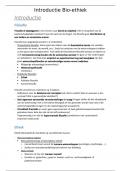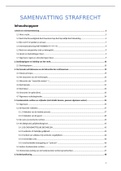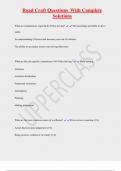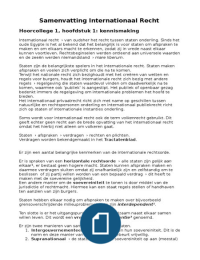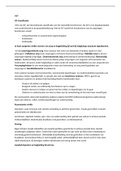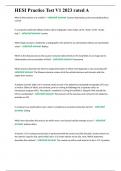Critical Psychodiagnostics
Defining Mental Disorder
• The concept of mental disorder is fundamental to the discipline of clinical psychology (though discipline not
confined to only treating ‘disordered’ conditions)
• In clinical practice and research, the Diagnostic and Statistical Manual of Mental Disorders (DSM) and the
International Classification of Diseases (ICD) classification systems are the primary judges of what is
disordered, while remaining theory-neutral about etiology (why)
• These do not comment on the aetiology (cause) – are neutral and simply provide diagnostic criteria without
considering possible causes for disorders.
DSM 5 ICD 11
American Psychiatric Association (APA) – World Health Organisation (WHO) – ±193 member
represents mostly the American context countries (more representative)
Official USA classification system, though used Official WHO global classification system, including in
elsewhere low-income countries
Mental disorders only (thus much more detailed) Includes medical diseases and mental disorders
±R4500 (not accessible) Available freely on the internet
Clear operational criteria, time frames, exact Description and guidance rather than operational criteria
number of symptoms required (aims at inter-rater - more room for clinician judgement in making
reliability) diagnoses
• What do we mean when we say that a psychological condition is not merely a form of normal human
distress but a form of ‘mental disorder’?
• What is the boundary between normal and disordered functioning – impairment in ability to function in life –
how proportional is the behavior to the situation (how disproportionate/maladaptive is the response). No
biological markers for most mental disorders, only patients’ subjective reports and clinicians’ observations. No
consensus/agreement on how to operationally define mental disorder, mainly because there is also no
definition of ‘mental order’ (normal, expectable human feelings and behaviour) to set it against. Etiological
uncertainty and theoretical fragmentation add to the definitional difficulties
Why do we need to know if somebody has a mental disorder? – in order to be able to assist people with treatment.
Make decisions about where to direct resources and intervene. Who needs help and support. Also practically, you need
a diagnosis in order to access mental health treatment.
DSM 5 criteria for mental disorder:
1. A syndrome characterised by clinically significant disturbance in an individual’s cognition, emotion
regulation, or behaviour
2. Reflects a dysfunction in the psychological, biological, or developmental processes underlying mental
functioning
3. Usually associated with significant distress or disability in social, occupational or other important activities
4. An expectable or culturally approved response to a common stressor or loss, such as death of a loved one, is
not mental disorder
5. Socially deviant behaviour (political, religious, sexual) and conflicts that are primarily between the individual
and society are not mental disorders unless the deviance or conflicts result from a dysfunction in the
individual
These criteria can be critiqued: how can we determine what is clinically significant, what does it mean to be
dysfunctional to each individual, and not all disorders can be associated with distress or perceived impairment by the
patient themselves. The fourth criteria exclude a normal expected reaction from a disorder, like grief. This requires a
psychologist be culturally informed. They clarify five because in the past they themselves fell victim to this, such as
with homosexuality being a disorder in the past.
ICD-11:
, 1. syndrome characterised by clinically significant disturbance in an individual's cognition, emotional regulation,
or behaviour
2. reflects a dysfunction in the psychological, biological, or developmental processes that underlie mental and
behavioural functioning.
3. usually associated with distress or impairment in personal, family, social, educational, occupational, or other
important areas of functioning.
(no criteria that consider cultural or social factors which can be problematic)
DO THE DSM 5 AND ICD-11 DEFINTIONS OF MENTAL DISORDER ADEQUATELY DISTINGUISH NORMAL
HUMAN FEELINGS/THOUGHTS/BEHAVIOURS FROM DISORDERED ONES?
Some different positions on mental disorder (Karter and Kamen):
1) Mental disorders are real neurobiological entities and can (or eventually will) be measured/detected accurately
through scientific methods (e.g. current NIH position); DSM disorders just describe what is actually out there
(Implying that if it is not happening in the brain and eventually measurable, then it is not a mental disorder)
2) Mental disorders are real, but complex; they can’t be neatly ‘carved up’ like the DSM tries to do (e.g. there are
probably several schizophrenic disorders, rather than just one “schizophrenia”); within this complexity, diagnostic
systems provide a useful heuristic (mental short-cut for making clinical judgements) but that’s all
3) Mental disorders are social constructs of particular times and contexts, they are ways of making sense of complex
experiences; how we try to describe them (e.g. DSM diagnostic categories) influences how we see/experience
them, and this will change over time and place
4) While distress/suffering is real, the concept of ‘mental disorder’ was invented as a means of social control and
should be rejected outright
5) Although there are some ‘real’ mental disorders, others have been invented in an ongoing process of
medicalisation (pathologizing normal human responses) and this medicalisation process benefits some (e.g. Big
Pharma; and neoliberalism, capitalism more broadly) and disempowers/marginalises others.
Diagnostic inflation
There is a trend towards increase in number of disorders, and number of people being diagnosed over time.
Increase in number of people being diagnosed:
• Depression rates in US adults more than doubled in twenty years since 1991; today, nearly 30% have been
diagnosed with depression at some point in their lives
• Among children and adolescents in the USA, ADHD diagnoses have increased from 6.1% to 10.2% in the 20-
year period from 1997 to 2016
• There was a 40-fold increase in childhood bipolar disorder in the 10- year period since mid-1990s
• Notable increase in diagnosis of autism/ASD: In 2000,
approximately 1 in 150 children in the USA; in 2022,
approximately 1 in 36.
• WHO: Globally, a 13% increase in number of people diagnosed
with a mental illness globally in the past 10 years
What drives these trends?
• Increased knowledge and research about mental disorders
“Medical research has made such enormous advances that there are
hardly any healthy people left” (Aldous Huxley)
• Increased public awareness about mental health issues (mental
health literacy)
• Lowered diagnostic thresholds for some diagnoses (as we update
criteria)
• Pharmaceutical industry marketing (especially re. childhood disorders! Massive process of medicalizing
children’s behaviour)
• Increased diagnosis and prescribing by primary care physicians (90% of anti-anxiety, 80% of anti-depression,
65% of stimulant and 50% of anti-psychotic medication) but they do not have a lot of training on providing
differential diagnoses.
• A diagnosis is required to access services or to receive financial reimbursement
• Perfectionistic societal values and expectations
Controversial new diagnoses in DSM 5:
, • Disruptive Mood Dysregulation Disorder (tutorial 3) [new childhood disorder]
• Mild Neurocognitive Disorder
• Binge-eating Disorder
• Prolonged Grief Disorder
• Caffeine withdrawal
Proposed diagnoses for future inclusion:
• Attenuated Psychosis Syndrome
• Internet Gaming Disorder (tutorial 2)
We can recognize that people struggle with these things. But has the DSM set the correct boundary for disordered
behavior. What are the benefits or can it cause harm by having this disorder?
Alzheimer’s was changed to MAJOR ND… also decided to create criteria to pick up early symptoms of Alzheimer’s...
MILD NEUROCOGNITIVE DISORDER (MND)
DIAGNOSTIC CRITERIA:
• Evidence of modest cognitive decline from a previous level of performance in one or more cognitive domains
(complex attention, executive function, learning, memory, language, perceptual-motor or social cognition),
based on:
1. Concern of the individual, a knowledgeable informant (such as a friend or family member) or the clinician
that there’s been a mild decline in cognitive function; and
2. A modest impairment in cognitive performance, preferably documented by standardized
neuropsychological testing or another qualified clinical assessment (is this practically helpful because we
don’t have a standard or norm).
3. The cognitive deficits do not interfere with capacity for independence in everyday activities (e.g.,
complex instrumental activities of daily living such as paying bills or managing medications are
preserved, but greater effort, compensatory strategies, or accommodation may be required).
Aim is to identify those at risk for development of Alzheimer’s but:
- No real predictive power (only 15% diagnosed with a major disorder. 85% is normal ageing).
- No clear treatment strategies as yet
PROLONGED GRIEF DISORDER
Stuck in the grieving process
– so abnormal grieving here.
They say if you have these
symptoms within a time
frame they prescribe. How
can you prescribe a length to
grieve.
Benefit; gives access to
support to heal.
But doesn’t consider how
different cultures grieve.
Are we pathologizing a
normal human experience.
BINGE-EATING
DISORDER
, DIAGNOSTIC CRITERIA:
• Recurrent episodes of binge eating, characterised by both of the following:
• Eating, in a discrete period of time (e.g. within any 2-hour period), an amount of food that is
definitely larger than most people would eat during a similar period of time and under similar
circumstances.
• A sense of lack of control over eating during the episode (e.g. a feeling that one cannot stop eating or
control what or how much one is eating). – very subjective.
• The binge eating episodes are associated with three or more of the following:
• eating much more rapidly than normal; eating until feeling uncomfortably full; eating large amounts
of food when not feeling physically hungry; eating alone because of feeling embarrassed by how
much one is eating; feeling disgusted with oneself; depressed or very guilty afterward
• Marked distress regarding binge eating is present
• Binge eating occurs, on average, at least once a week for three months (quite a low threshold)
• Binge eating not associated with the recurrent use of inappropriate compensatory behaviours as in Bulimia
Nervosa and does not occur exclusively during the course of Bulimia Nervosa, or Anorexia Nervosa methods
to compensate for overeating, such as self-induced vomiting.
DSM: “Intended to increase awareness of the substantial differences between binge eating disorder and the common
phenomenon of overeating”
ATTENUATED PSYCHOSIS SYNDROME
(Proposed for inclusion)
A. At least one of the following symptoms is present and is of sufficient severity or frequency to warrant clinical
attention:
1. Attenuated delusions (e.g. a guarded, distrustful attitude; views others as untrustworthy or senses ill
will in others).
2. Attenuated hallucinations (e.g. alterations in sensory perceptions (sees shadows, trails or hears
murmurs, rumblings that others can’t).
3. Attenuated disorganized speech (e.g. vague, metaphorical, muddled, or off-track speech).
B. Symptom(s) must have been present at least once per week for the past month
C. Symptom(s) must have begun or worsened in the past year
D. Symptoms are sufficiently distressing and disabling to the individual to warrant clinical attention
E. Symptoms are not better explained by another mental disorder, including a depressive or bipolar disorder with
psychotic features, and is not attributable to the physiological effects of a substance or another medical
condition.
F. Criteria for any psychotic disorder have never been met
Useful idea: Trying to predict people who could be at high risk of schizophrenia or other schizo disorders so that we
can address it. (attenuated = milder). Before people experience schizophrenia, they experience mild groups of
symptoms, so the DSM is trying to help young people early on by preventing worsening.
With the delusions, does this consider personal context like childhood abuse causing people to distrust others. Only
requiring one and not an interplay could be problematic and jumping to conclusions. Disorganised speech – how do
we distinguished normal vague speech or a persons normal metaphorical or perhaps flowery way of speech, and
speech that is actually cause for concern. How can a psychologist distinguish accurately. If we set the threshold too
low, we could be causing false panic or misdiagnosing.
How predictive is this test; this could predict people getting worse but it could also merely reflect a person whose
functioning will remain stagnant at this phase for their life. But this could be helpful in preventing worrying symptoms
from worsening. A diagnosis on the DSM unlocks funding for treatment options.
What is the remedy for diagnostic inflation?
Frances & Widiger (2012):
“Rates of disorder rise easily because mental disorder has such fluid boundaries with normality”.
Therefore, we need to practice ‘diagnostic conservatism’:
• A high standard of scientific evidence should be required for entry into diagnostic system or for changes to
criteria: rigorous systematic reviews and field trials
• Wide and transparent consultation (vs. confidentiality agreements for DSM 5 task team)
• Recognise that small changes have big consequences (lower thresholds lead to false epidemics of mis-
identified pseudo-patients)

